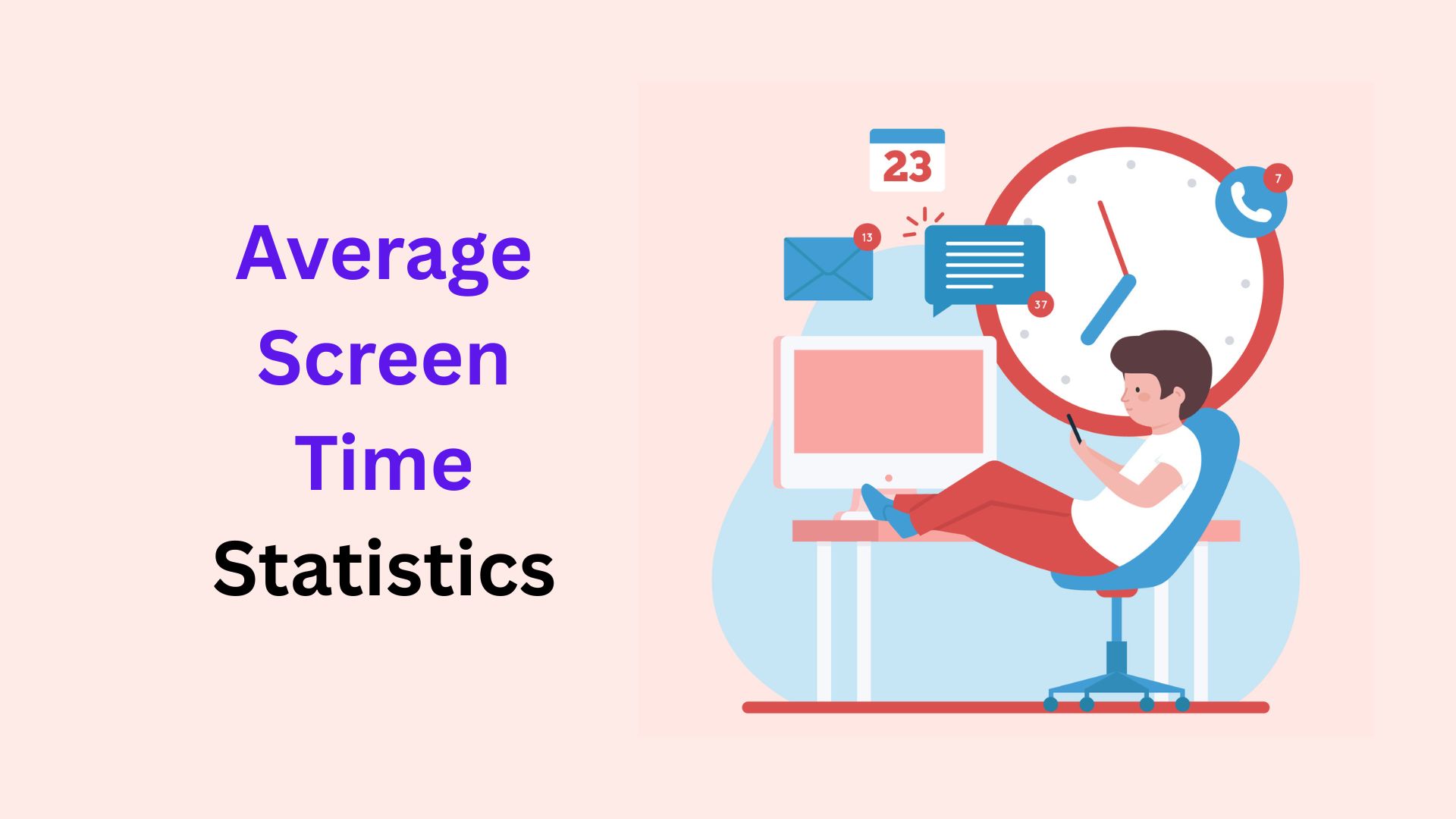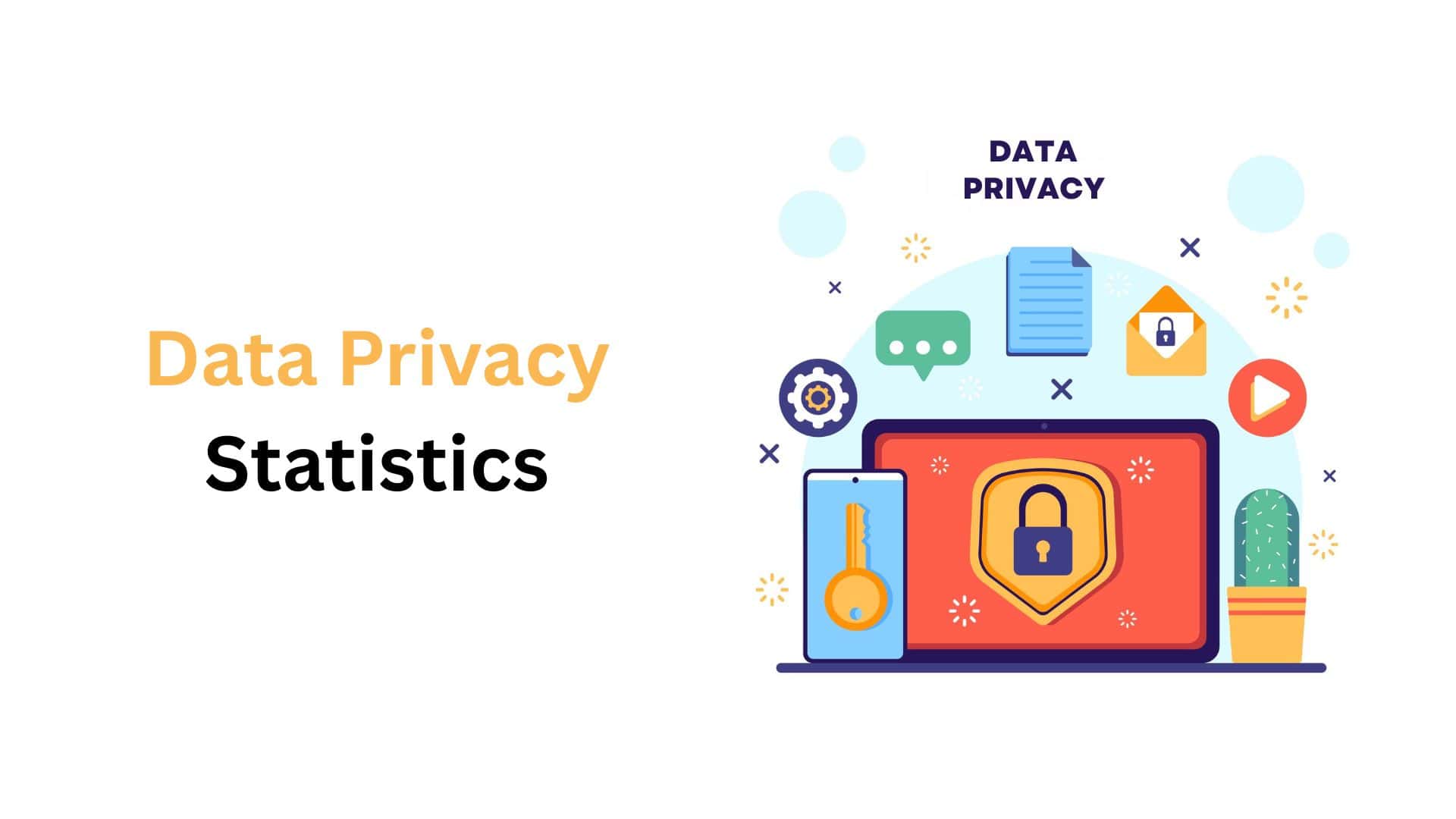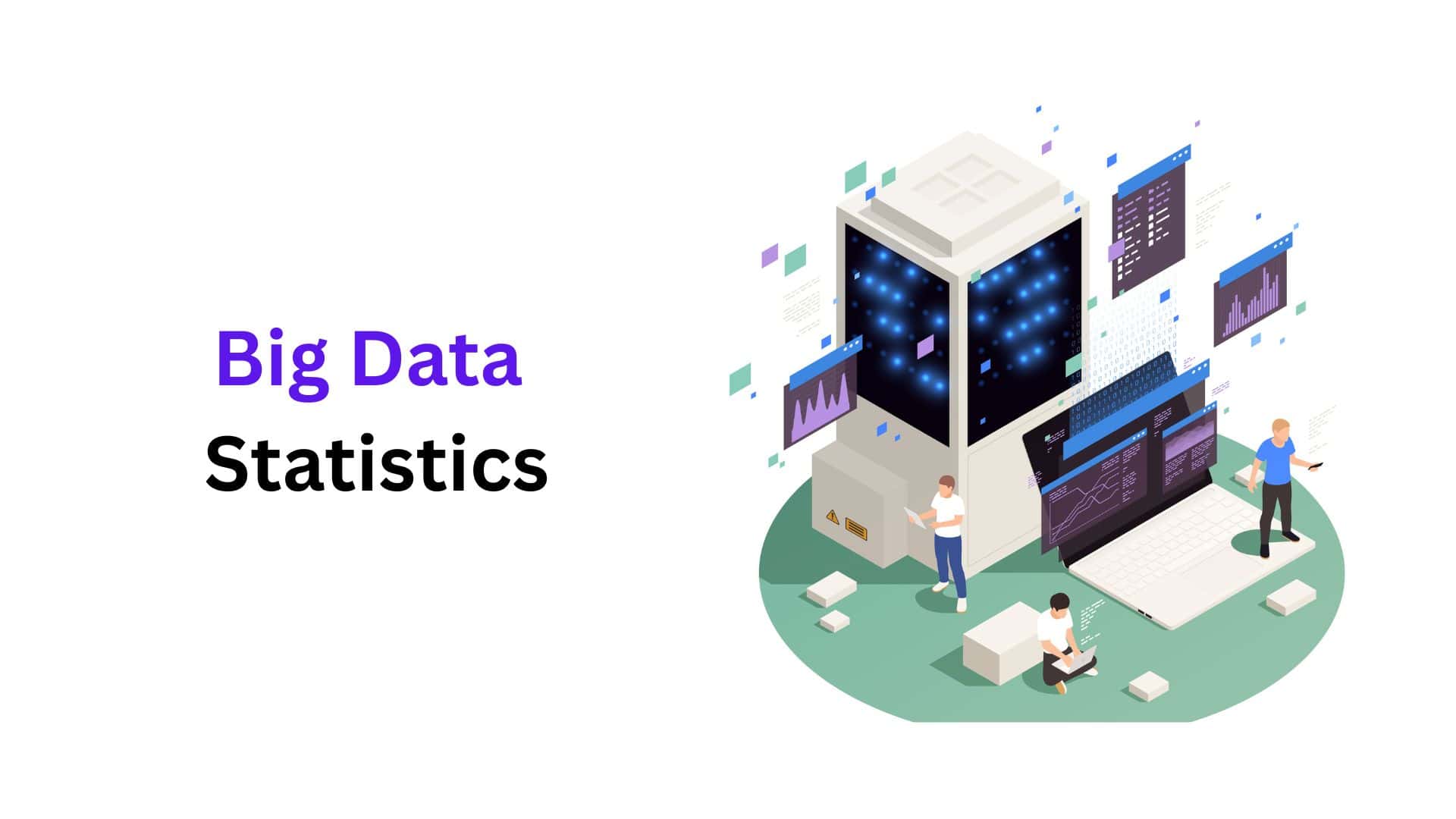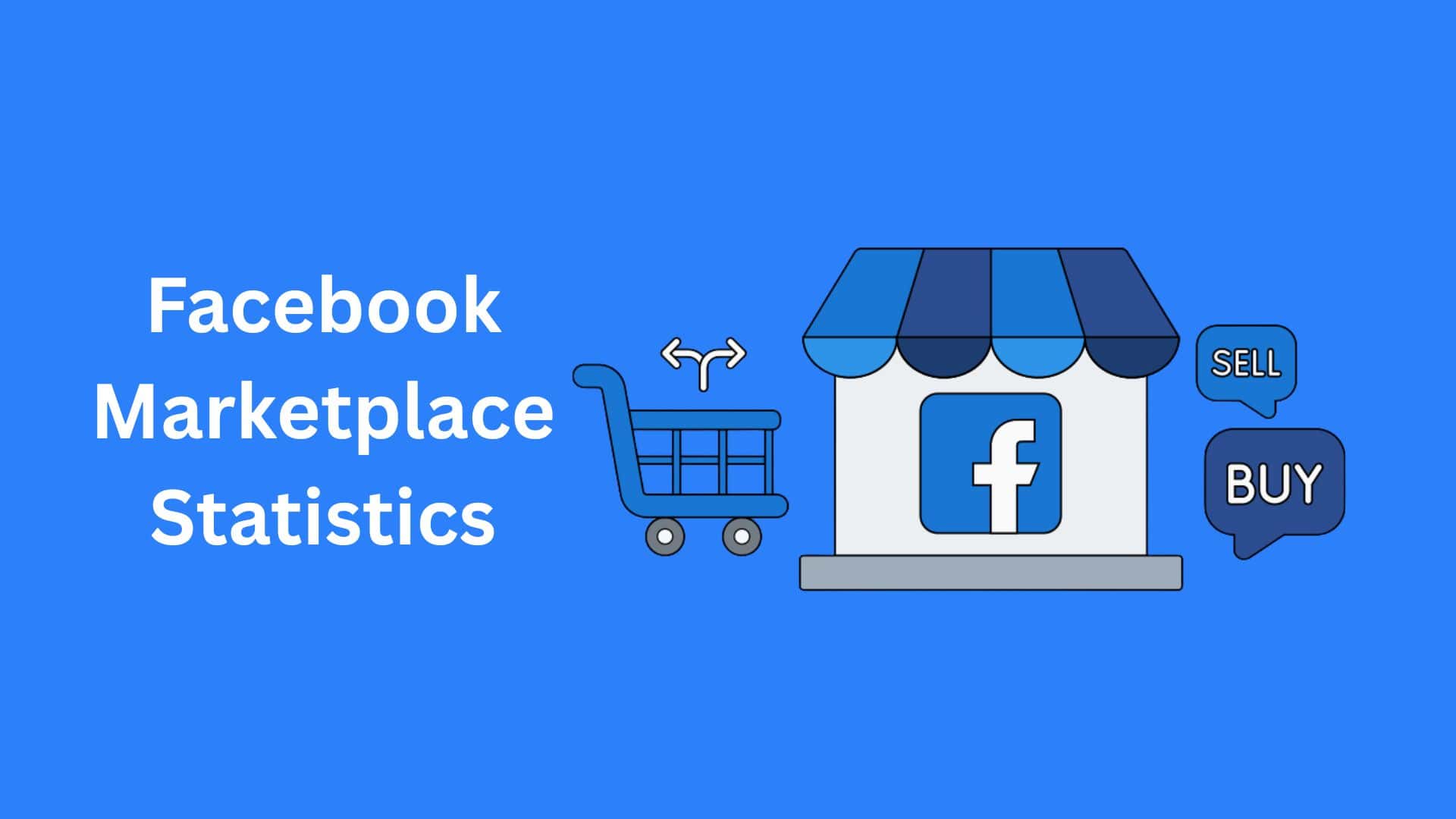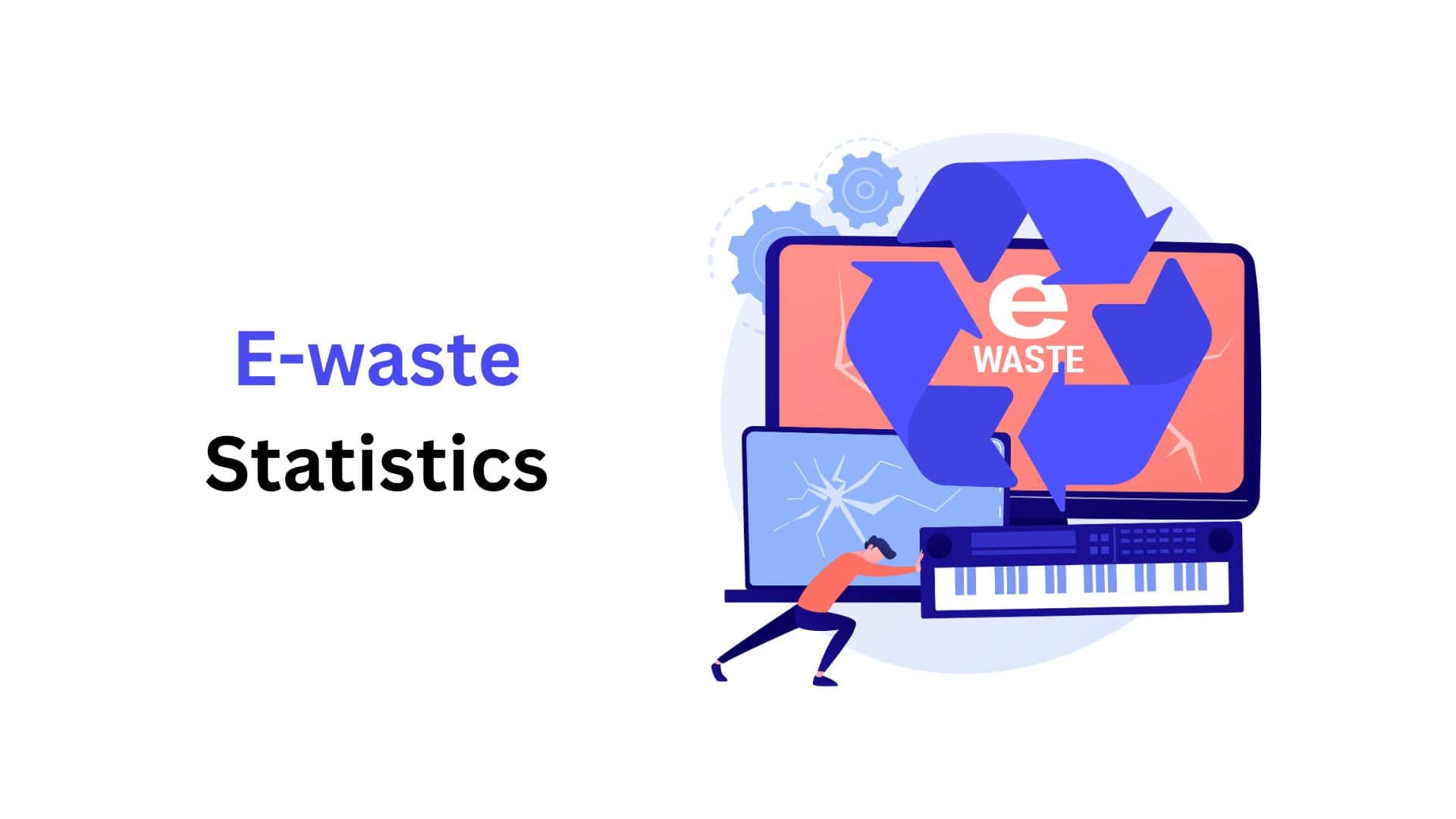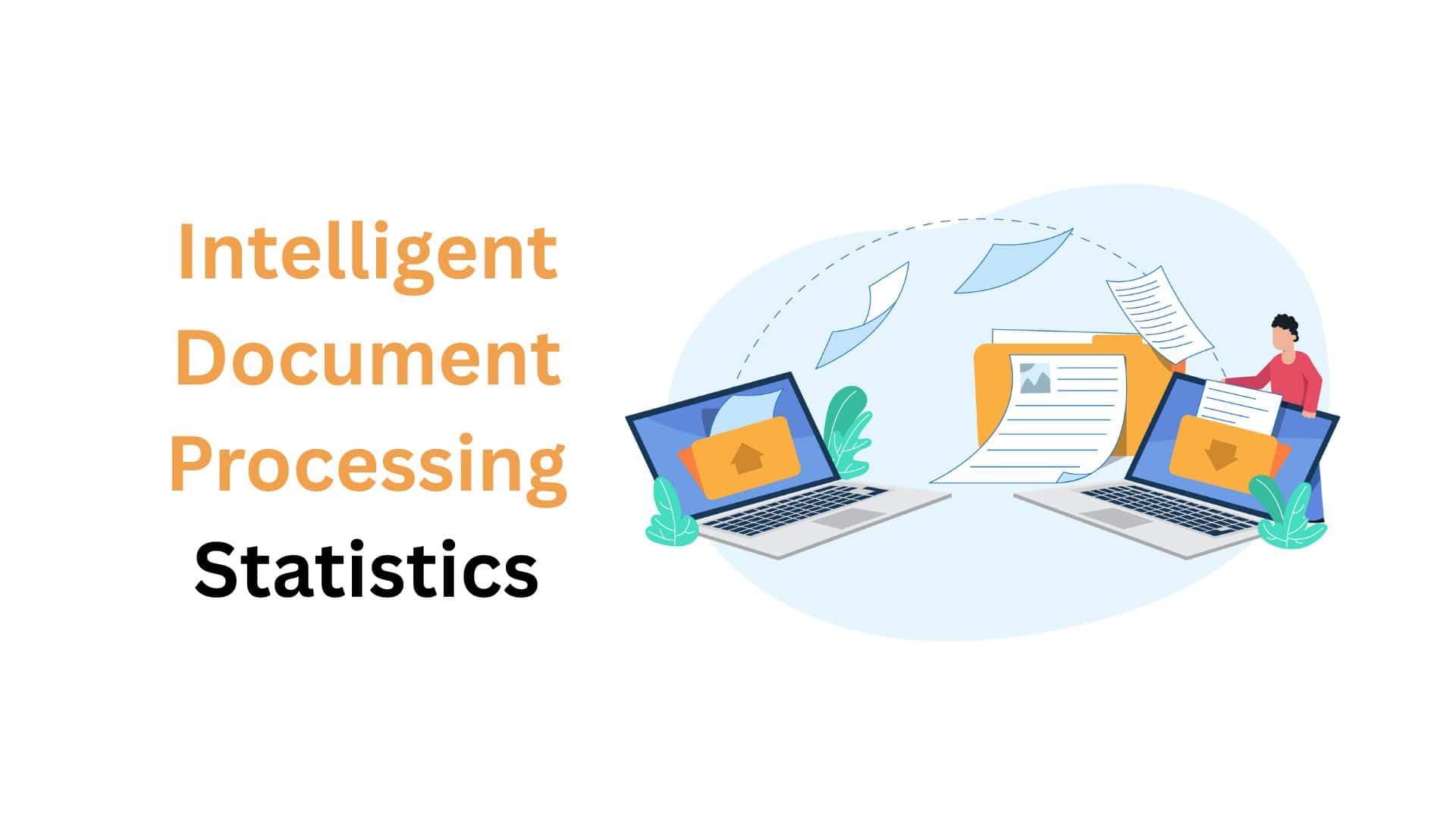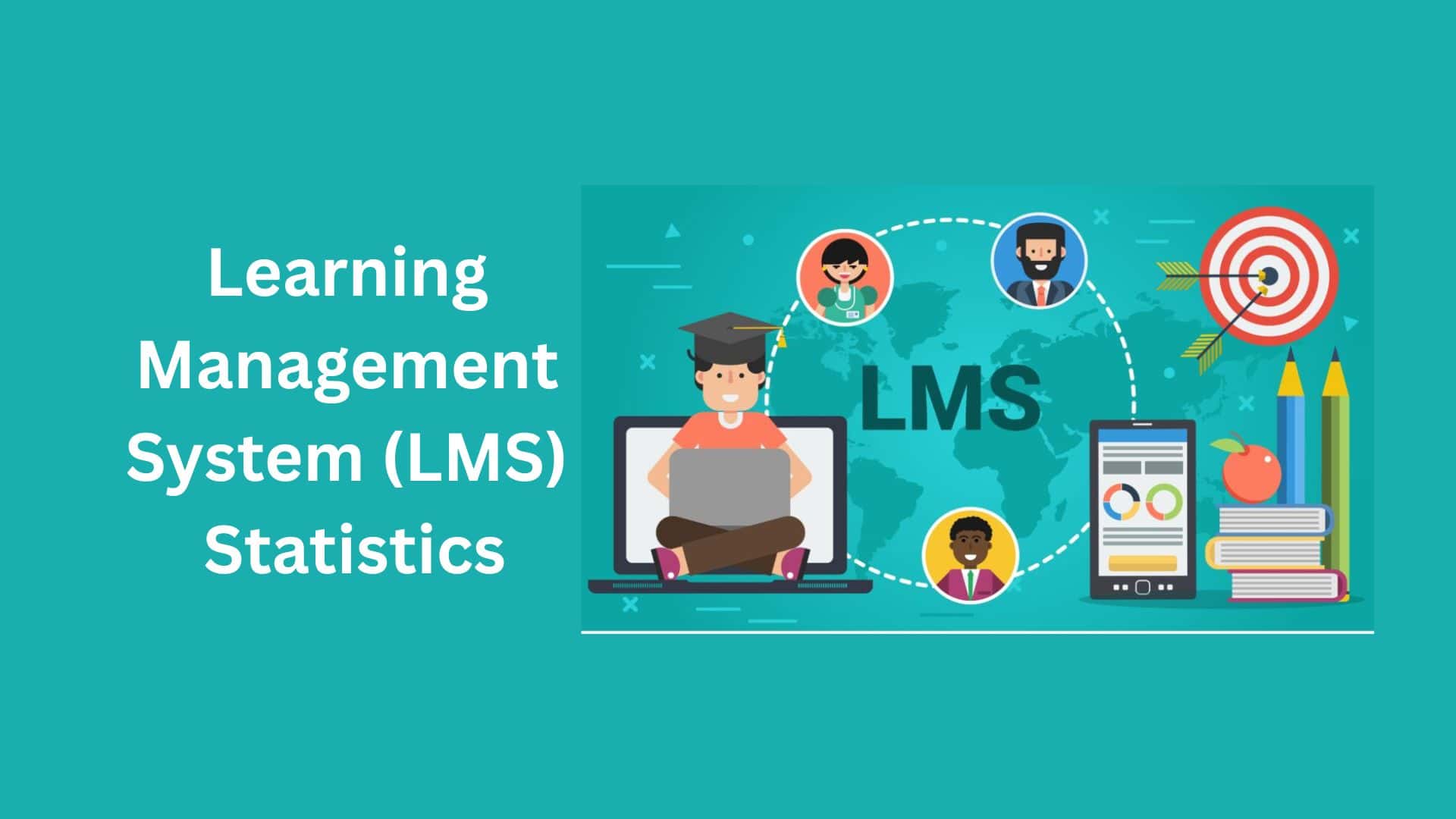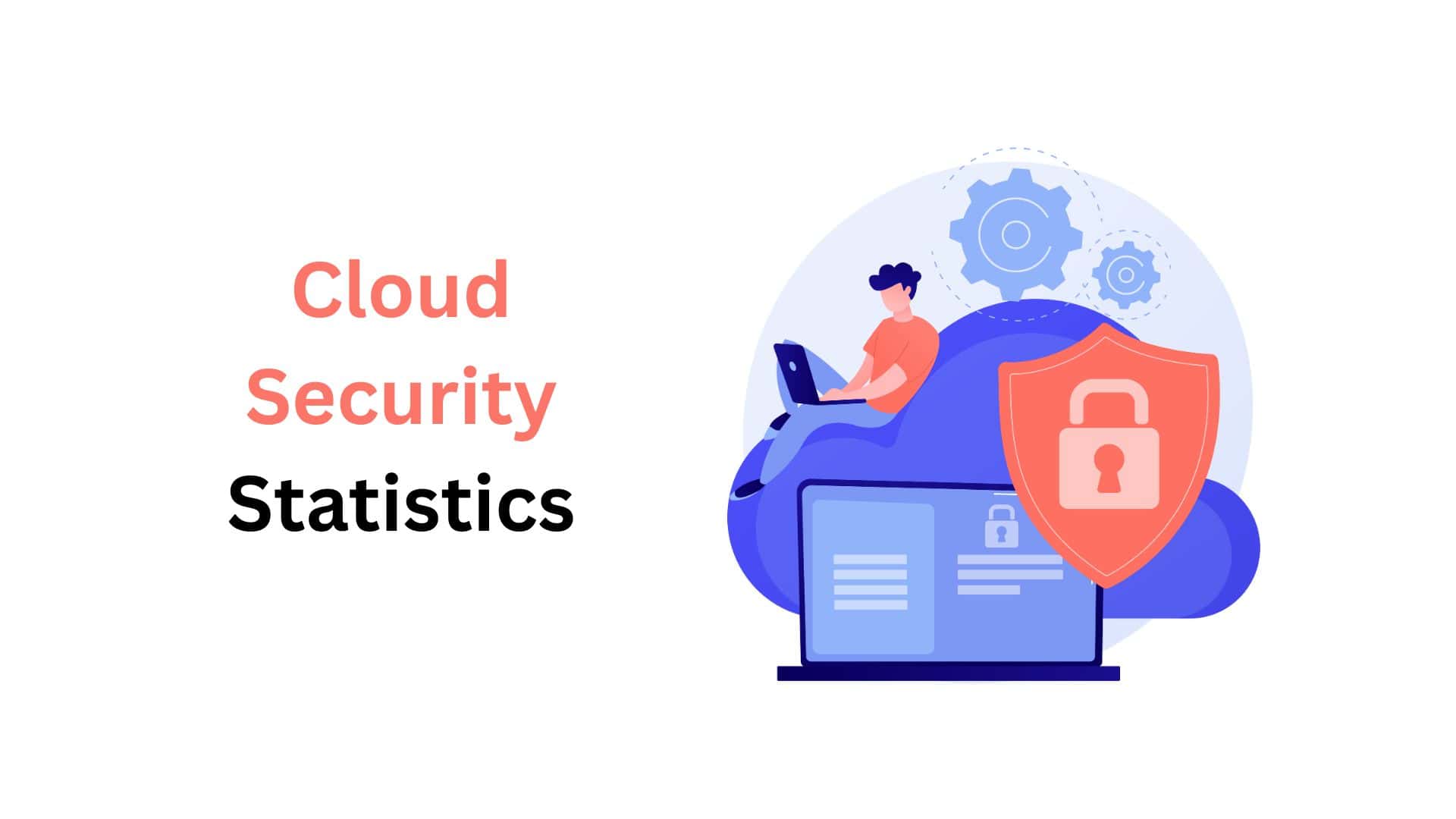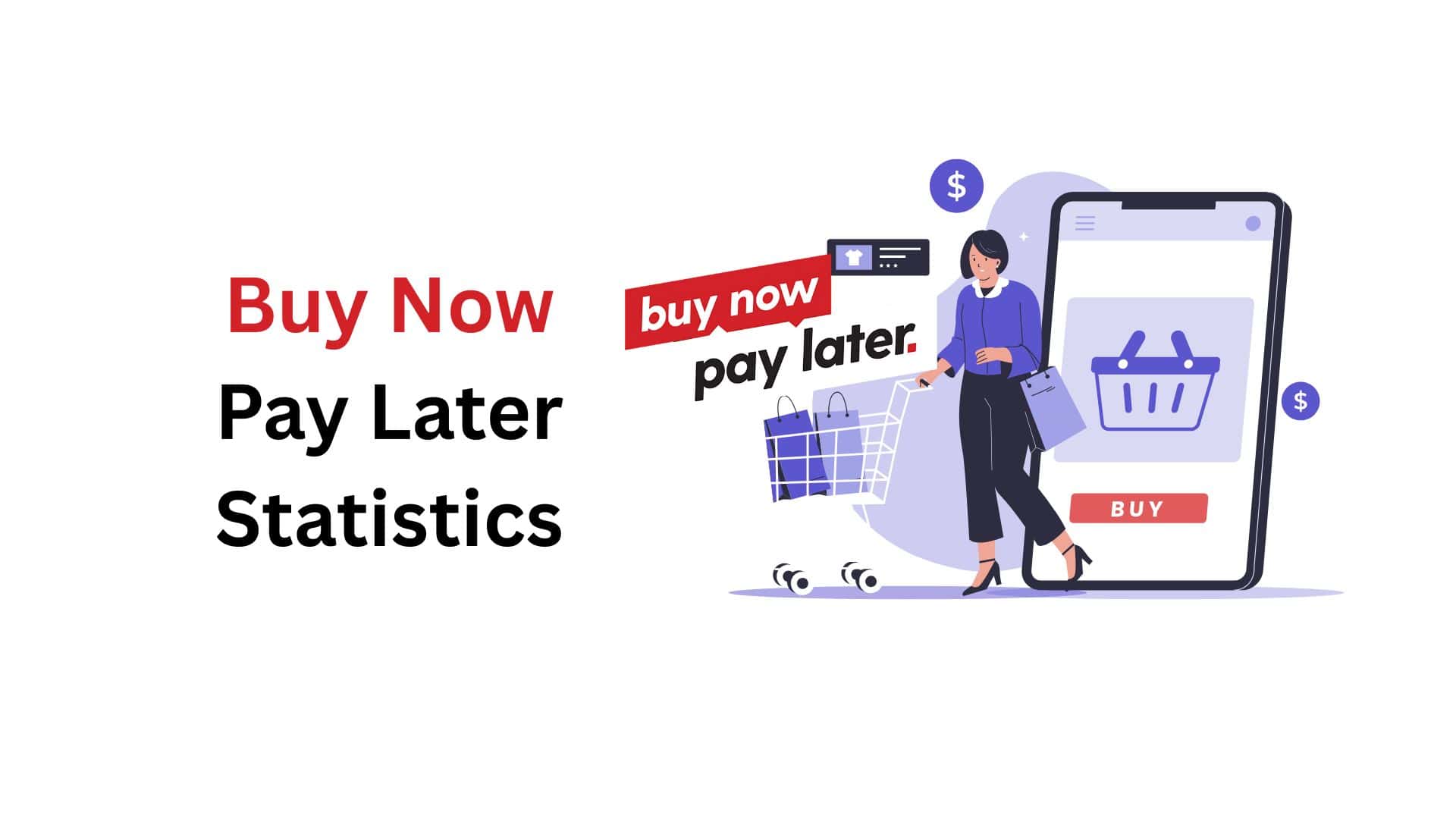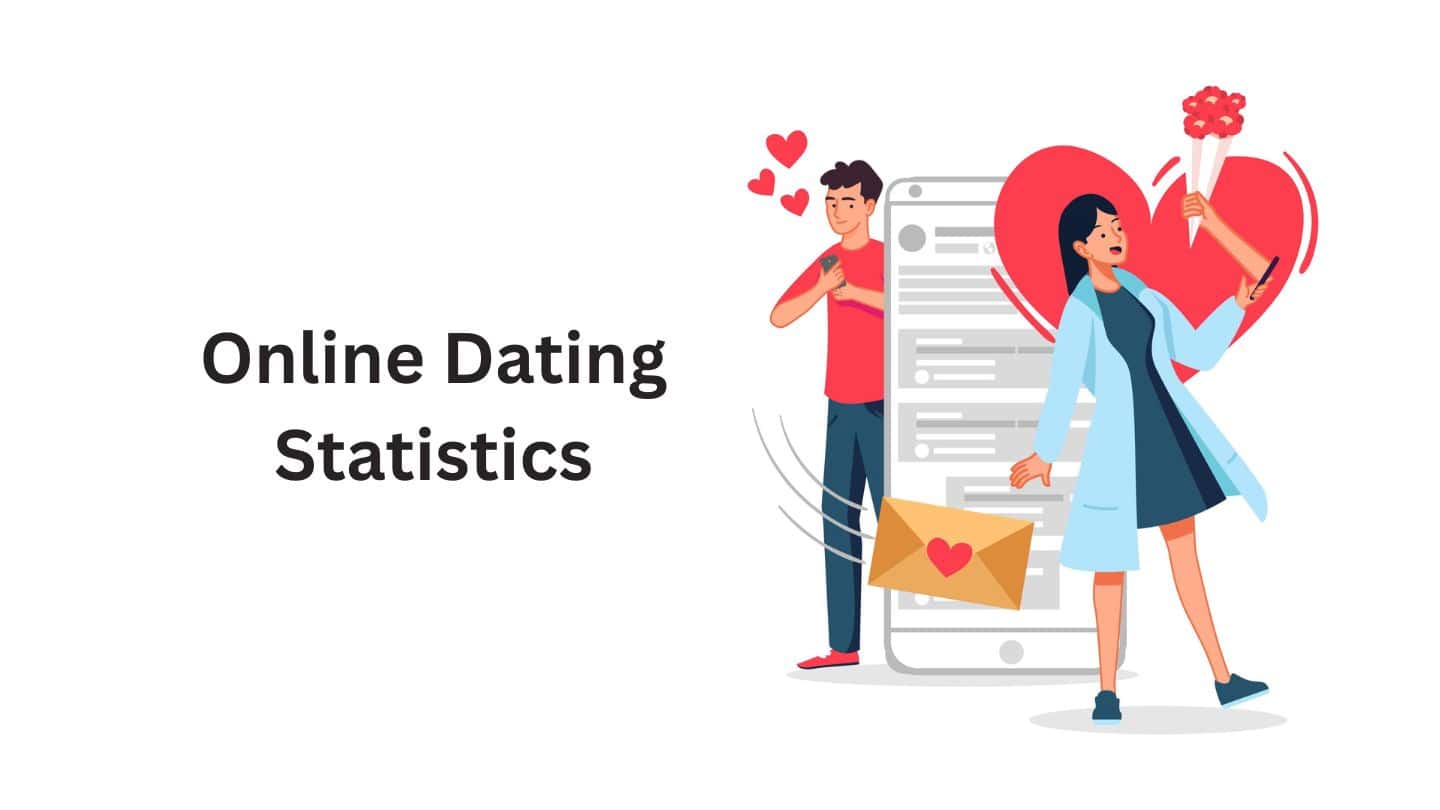Bard Statistics By Users, Usage, Traffic and Facts (2025)

Updated · Oct 14, 2025

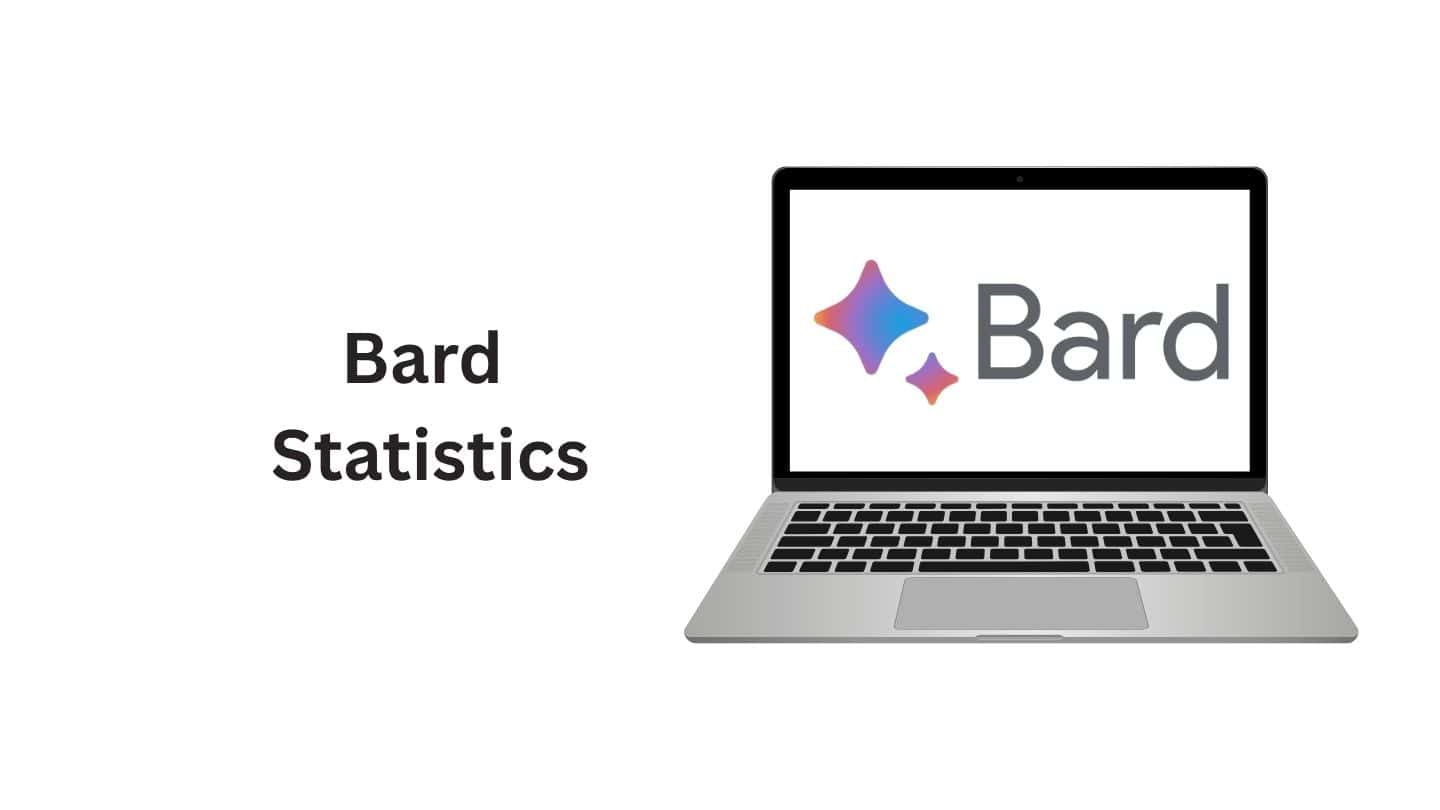
WHAT WE HAVE ON THIS PAGE
Introduction
Bard Statistics: As a tech journalist and content creator, I have been tracking the evolution of Google Bard (now Gemini) since day one. Its quick turnaround from a controversial launch to a major industry strength has been one of the most exciting stories in tech.
Today, I’m providing an exclusive analysis based on over two years of data, incorporating the fresh 2025 usage metrics and demographic insights. I’m here to show you exactly what this growth means for your AI roadmap. Without further ado, let’s get started.
Editor’s Choice
- The platform now attracts over 400 million monthly visits (as of early to mid-2025), cementing its position among the world’s leading generative AI tools.
- The overall market reach is projected to surpass 1 billion users by the end of 2025, which translates to nearly 1 in 8 people globally having access.
- The model was trained on a colossal56 trillion words of raw text data, which provides a deeper, more expansive knowledge base than many competitors.
- 50% of its training data came from public forums and dialogue sources, explaining its fluid, human-like conversational style.
- The advanced Gemini 5 Pro model can analyze up to 1 million tokens in a single prompt, the equivalent of about 700,000 words (a full-length novel) at once.
- The largest user segment is 25 to 34 year olds, accounting for 20% of the user base, indicating a strong focus on young professionals and early-career productivity. Over 56% of all users are under the age of 35.
- The user base shows a clear skew toward male users, who make up approximately 60% of the audience.
- Research and Information Seeking is the number one use case (40% of users), confirming Gemini’s strength as a supercharged search tool.
- The average session duration is just 19 minutes, which is a sign of efficiency. Users are focused on getting a quick, definitive answer and moving on to the next task.
- 61% of traffic is Direct, meaning users intentionally type the URL or use a bookmark. This signals exceptional brand loyalty and user habit.
- The Natural Language Processing (NLP) market is set to skyrocket from $37.1 billion in 2023 to $453.3 billion by 2032.
- This expansion is driven by an explosive 1% Compound Annual Growth Rate (CAGR).
- The Healthcare sector is the single biggest industry adopter, seizing a market-leading 1% share.
- Large Enterprises are the primary buyers, accounting for more than 1% of the market spending.
- North America remains the global powerhouse, capturing over 7% of the market share.
- Since 40% of users are doing research, focus on creating high-value, authoritative, and fact-checked content that the AI can reliably summarize and synthesize.
- Tailor your topics toward career development, professional productivity, and complex problem-solving to capture the dominant 25 to 34 age segment.
- YouTube is the biggest social media referral channel (19% of social traffic). Use video tutorials and guides to drive qualified users directly into the Google ecosystem.
- The 19-minute session duration confirms that users want quick answers. Optimize your content for scannable, punchy takeaways.
Google Bard’s User Base
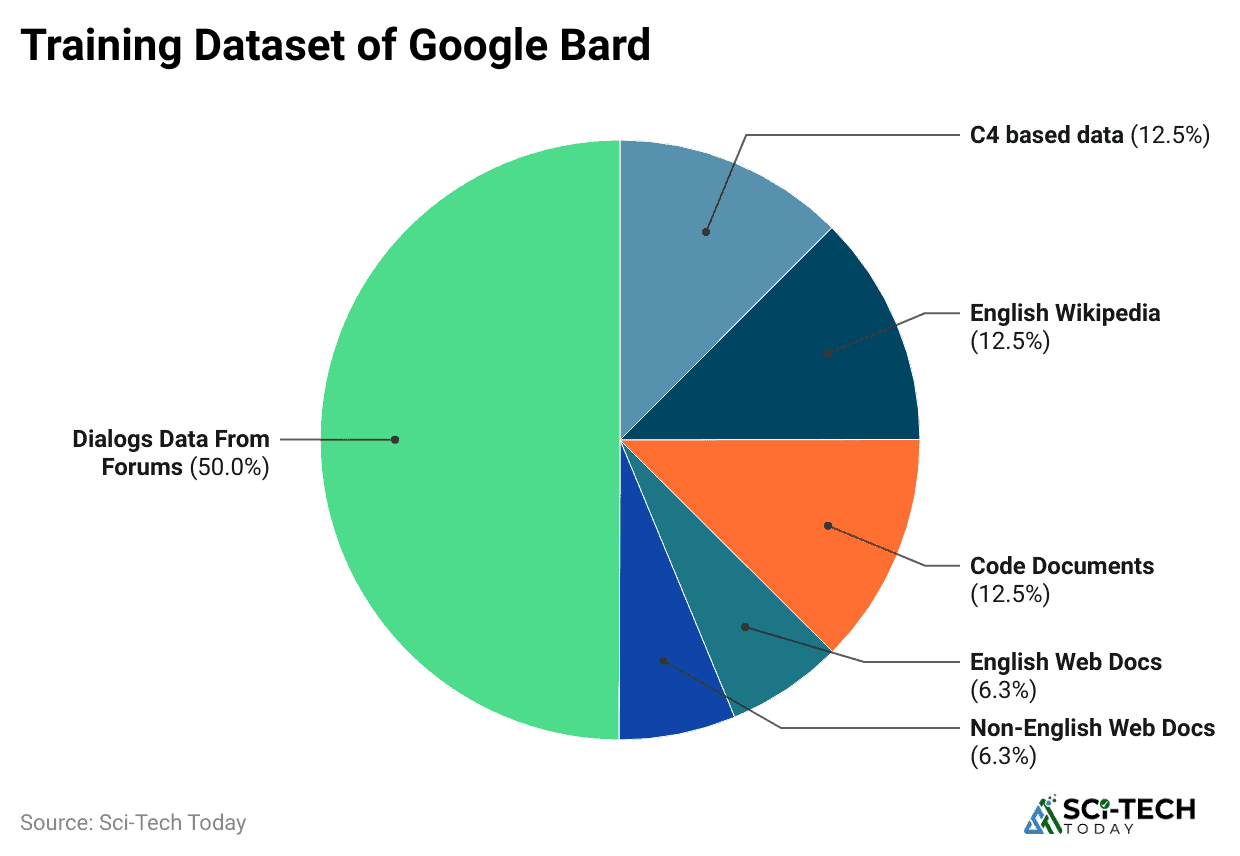
- The foundation of Google Bard was officially announced on February 8, 2023, a strategic move that immediately positioned Google as a serious competitor in the conversational AI space.
- Public access to the initial experimental version of Google Bard was rolled out on March 21, 2023, marking the true starting gun for its user acquisition race.
- Within the first month of its launch in March 2023, the platform had already amassed approximately 30 million global visits, demonstrating the immediate, massive public interest in a Google-backed chatbot.
- By the end of 2023, the platform had achieved a monumental figure of around 142.4 million monthly active users, a clear sign that it had moved beyond the “experimental” phase and into mainstream utility.
- As of early to mid-2025, the consolidated Gemini platform, which evolved from Google Bard, now attracts over 400 million monthly visits, cementing its position in the top tier of generative AI tools globally.
- The overall estimated market reach for the Google Bard technology, now under the Gemini umbrella, is projected to surpass 1 billion users by the end of 2025, which would mean nearly 1 in 8 people worldwide would have access to the service.
| Initial Launch | Public Access Date | March 21, 2023 |
| Monthly Visits | Current Estimate |
400 Million |
|
Market Projection |
Year-End 2025 Target |
1 Billion Users |
Google Bard Usage Statistics
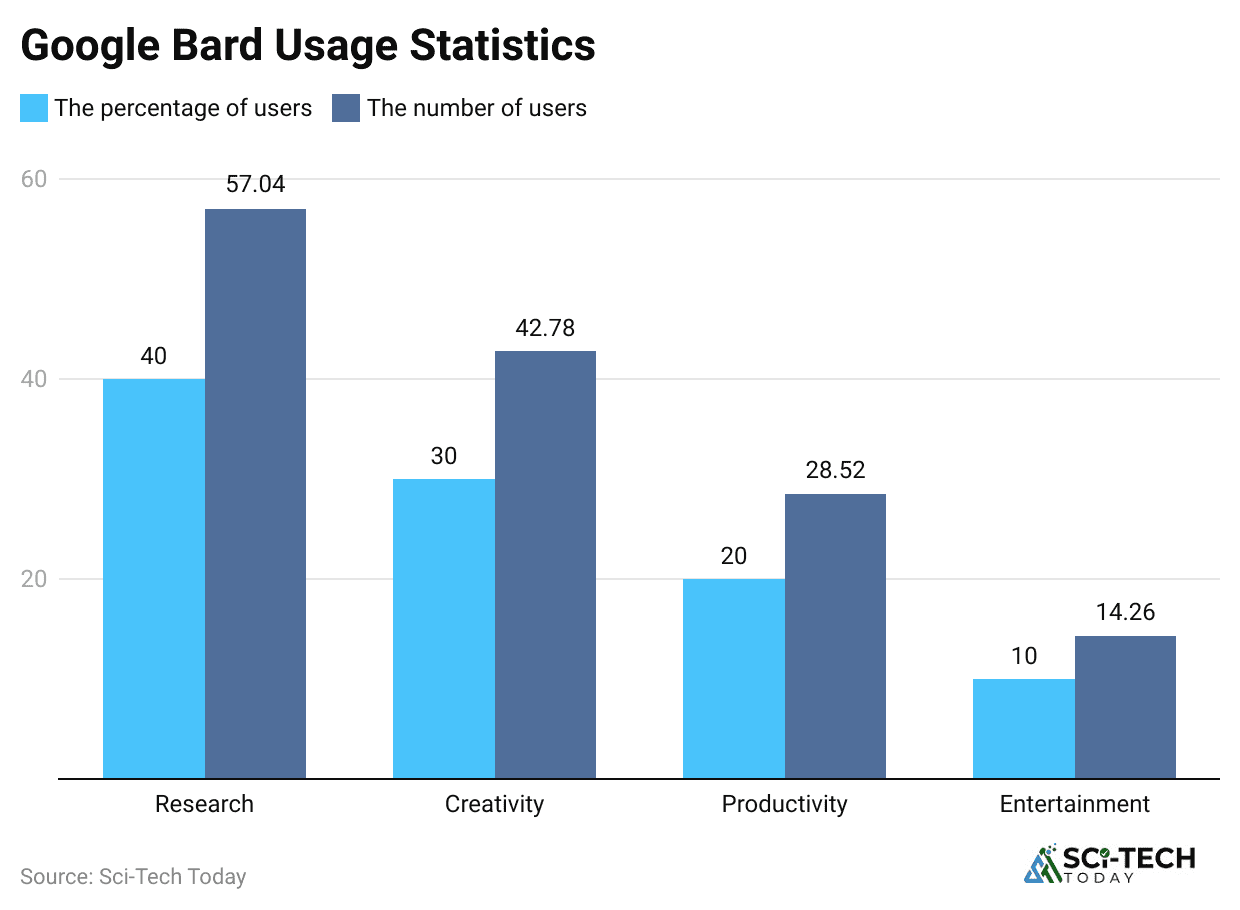
- The initial architecture of Google Bard was built upon the LaMDA (Language Models for Dialog Applications) family of models, which was specifically engineered by Google for open-ended conversation and dialogue.
- The language model was pre-trained using a colossal 750 GB of diverse data, a comprehensive corpus that includes web pages, books, and various forms of user-generated content.
- The raw text data size powering the language model is equivalent to an astounding 1.56 trillion words, providing a deep and expansive knowledge base for generating nuanced and contextual responses.
- A significant portion of the training process utilized dialogue data, with 50% of the training dataset being derived from public forums and conversational sources, which directly contributes to its fluid, conversational style.
- The transition from LaMDA to the Gemini family introduced models with a dynamic context window, with the powerful Gemini 1.5 Pro offering 1 million tokens in production, which translates to the ability to analyze about 700,000 words in a single prompt.
- The estimated cost to run a single query on Google Bard (now Gemini) ranges approximately between $0.006 and $0.031.
| Training Corpus Size | Total Words | 1.56 Trillion Words |
| Dialogue Data Share | Percentage from Public Forums | 50% |
| Max Context Window | Gemini 1.5 Pro (Production) | 1 Million Tokens |
User Demographics
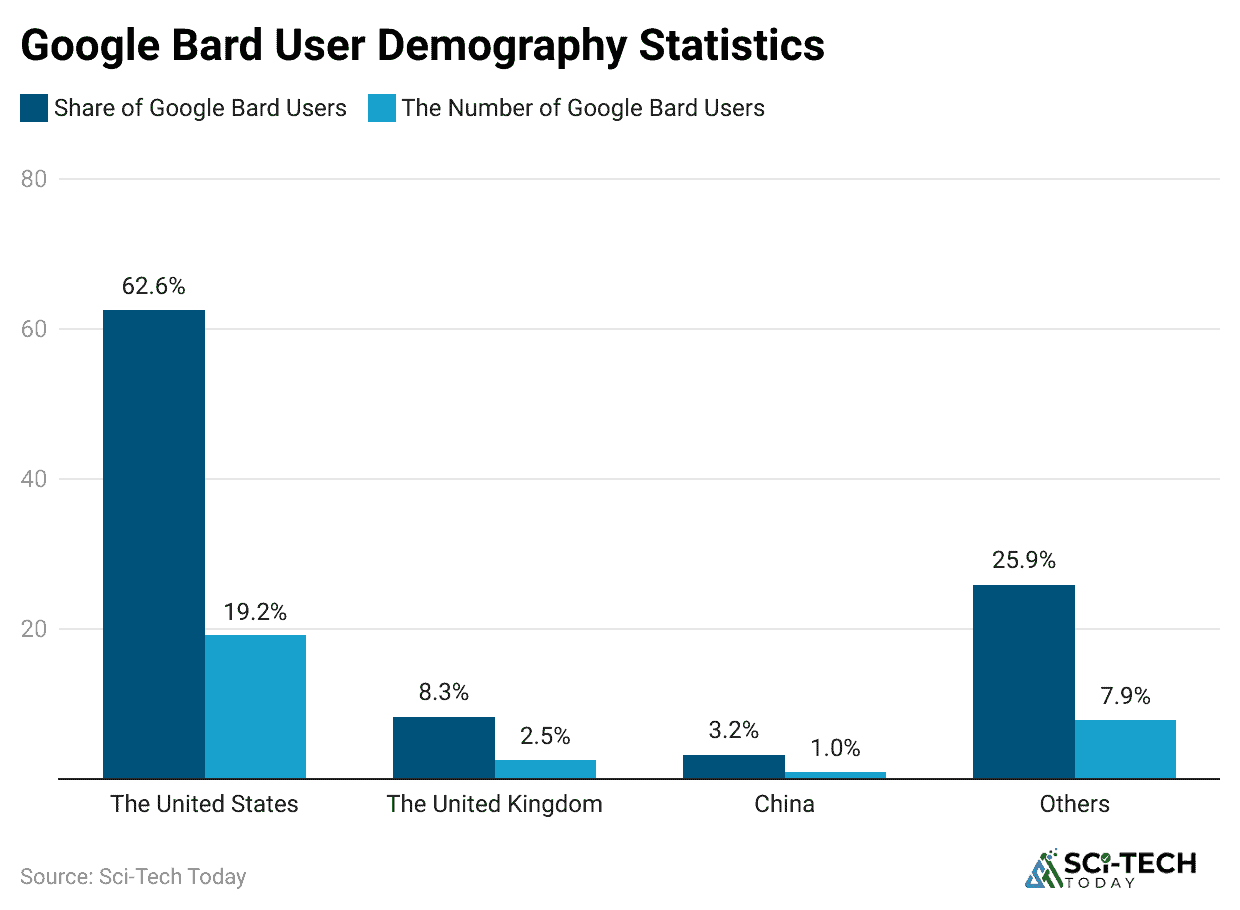
- The largest user segment on the Google Bard platform falls within the 25 to 34 age range, comprising an impressive 34.20% of the total user base.
- The second most active group is the 18 to 24 age range, accounting for a substantial 22.21% of users, confirming the platform’s strong appeal to students and young professionals.
- When looking at the gender distribution, the platform shows a noticeable skew towards male users, who make up approximately 60% of the user base, while female users constitute about 40%.
- The dominance of the 25 to 34 age group, combined with the 18 to 24 segment, means that over 56% of the platform’s users are below the age of 35.
- In the older demographics, usage drops off predictably, with the 55 to 64 age group making up only 7.03% and the 65+ group representing a minimal 4.02% of the platform’s audience.
| Largest Age Segment | 25 to 34 Years | 34.20% |
| Gender Split (Male) | Male Users | 60% |
| Youth Concentration | Users under 35 | 56% |
NLP Market Size
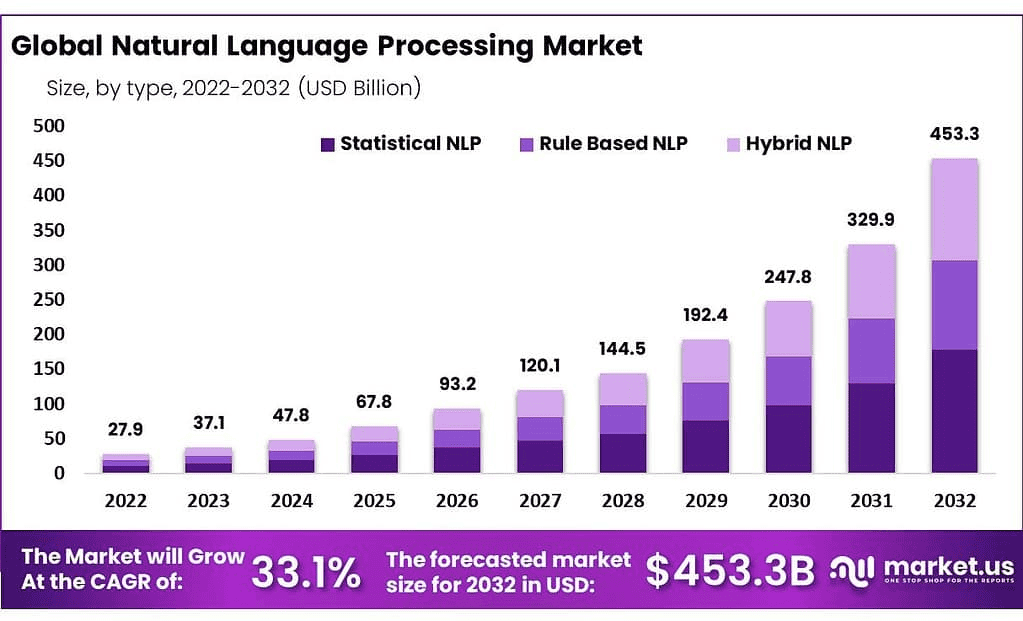
According to Markt.us, this is where the real money is, and these numbers show exactly how massive the change to conversational AI truly is. The underlying market growth for Natural Language Processing (NLP) is one of the most exciting stories right now, and the data is simply explosive.
- The global Natural Language Processing market is expected to reach USD 453.3 billion by 2032, rising from USD 37.1 billion in 2023, which reflects a 33.1% CAGR during 2024 to 2033.
- North America held a leading position in 2023 with more than 30.7% share and about USD 8.56 billion in revenue.
- AlphaSense raised USD 225 million, bringing its valuation to about USD 1.7 billion, and the funds will support product development, content growth, and customer service.
- In 2022, Statistical NLP accounted for over 39.3% of the market, indicating strong use of probabilistic and data-driven techniques.
- The Solution category led in 2022 with a share above 72.6%, showing that packaged platforms and software were adopted more than services.
- On-premises deployment captured a notable portion in 2022, which suggests that many buyers preferred tighter control and security for NLP workloads.
- Automatic summarization represented more than 18% of demand in 2022, highlighting growing needs for faster insight extraction from text.
- Large enterprises represented over 62.1% of total use in 2022, confirming that big organizations remain the main adopters of NLP.
- Healthcare contributed more than 23.1% of the market in 2022, driven by requirements for clinical documentation, patient data analysis, and decision support.
Traffic Flow and Global Reach
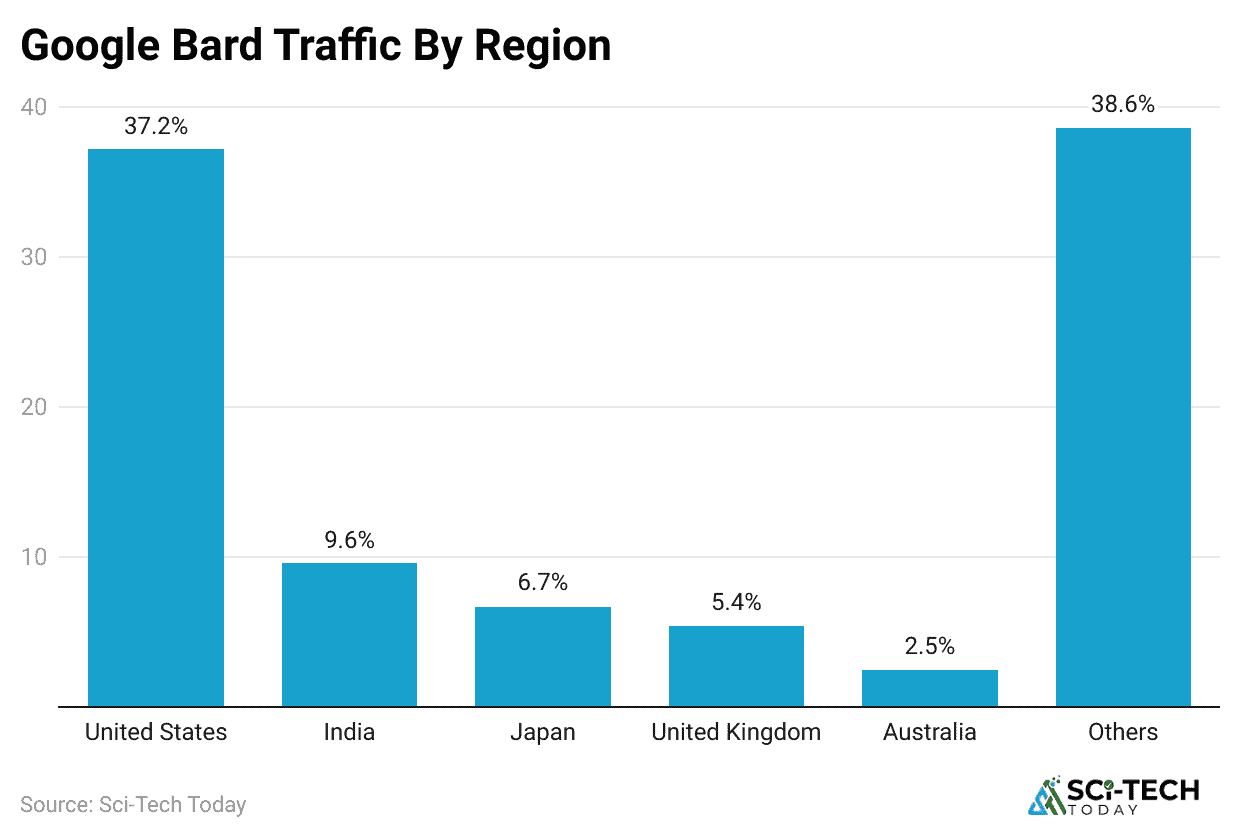
- Google Bard is a truly global product, accessible in over 230 countries and territories and supporting an impressive suite of 43+ languages, making it one of the most widely available conversational AIs.
- An overwhelming 79.61% of all traffic to the Google Bard platform is classified as Direct traffic, which means users are intentionally typing the URL or using a bookmark.
- Organic Search still plays a significant role, contributing 13.84% of the traffic, which is a powerful figure that highlights its discovery within the standard Google Search results.
- The United States is the undisputed traffic leader, generating a huge 37.24% of the total platform visits, followed by India, which accounts for 9.56% of the total traffic.
- Social media is a small but strategic acquisition channel, accounting for a modest 1.9% of the total traffic, which is a figure that aligns with a productivity tool rather than a purely social platform.
- Within the social media traffic, YouTube leads the charge with 52.19% of all social referrals, underscoring the platform’s successful integration and promotion across Google’s own video powerhouse.
| Dominant Traffic Source | Direct Traffic Share | 79.61% |
| Top Geographic Market | United States Traffic Share | 37.24% |
| Social Media Leader | YouTube’s Social Referral Share | 52.19% |
Usage Patterns and Engagement Metrics
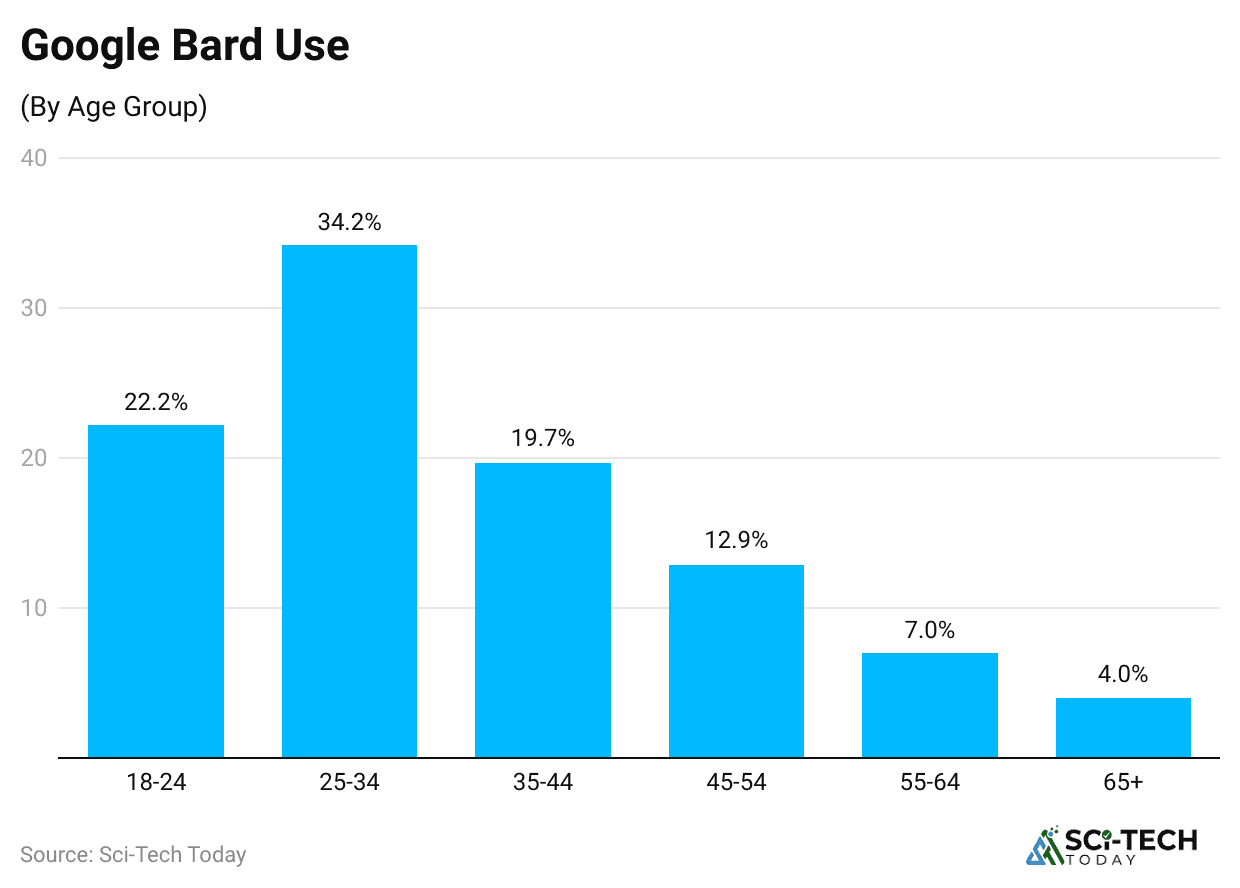
- The average session duration on Google Bard is approximately 3.19 minutes, a metric that suggests users are highly focused and seeking fast, utility-driven answers.
- Research is the number one use case, with an estimated 40% of users utilizing the platform to research topics of interest, which is a perfect reflection of its seamless integration with Google Search.
- Creative endeavors are the second-highest use, with 30% of users employing the AI for content creation, including drafting poems, writing scripts, and brainstorming new stories.
- A significant 20% of the audience seeks assistance with work or educational tasks, highlighting its strong position as a productivity booster for professional and academic workflows.
- The platform experiences predictable traffic fluctuations, seeing a peak of 189.2 million monthly visits in July 2023, a period often associated with mid-year content and academic research planning.
- The average number of pages visited per session is a modest 2.65 pages per visit, which is consistent with a user intent focused on getting a concise, definitive answer and then quickly exiting, rather than extensive exploration.
| Average Session Duration | Duration | 3.19 Minutes |
| Top Use Case | Research & Information | 40% of Users |
| Productivity Use | Work/Education Share | 20% of Users |
Social Media Traffic Statistics
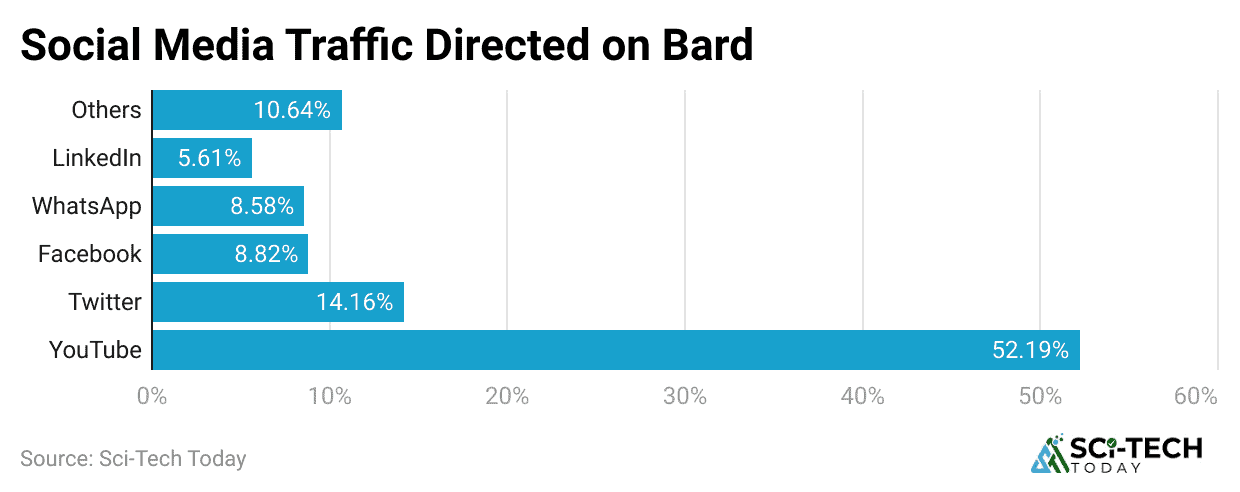
- The official rebranding of Google Bard and Duet AI under the new, unified Gemini brand took place in February 2024, signaling the end of the experimental phase and the start of a unified, enterprise-grade AI offering.
- The model powering the most advanced subscription tier, Gemini Ultra, was initially released in February 2024, showcasing a massive step-up in performance and multimodal capabilities.
- Google’s continued global expansion was quantified in June 2024 with the expansion of the Gemini application to European markets and the corresponding release of the Android application, significantly boosting the global user acquisition pipeline.
- For developer adoption, Google released Gemma, a family of smaller, open-source models based on Gemini, which came in two sizes, with neural networks of two billion and seven billion parameters, respectively, promoting widespread use.
- The long-term market prediction for the Natural Language Processing (NLP) market, which Google Bard is a major part of, is expected to grow from $37.1 billion in 2023 to a monumental $453.3 billion by 2032, reflecting a Compound Annual Growth Rate (CAGR) of 33.1%.
- The platform’s strategic integration with the core Google Search experience is projected to become a significant cost factor, with an estimated cost of $0.6 billion when AI handles just 10% of Google queries, each generating only 25 words per response.
| Market Growth Projection (NLP) | CAGR 2023 to 2032 | 33.1% |
| Rebrand Date | Official Gemini Launch | February 2024 |
| Search Integration Cost | Estimated Cost for 10% of Queries | $0.6 Billion |
Practical Implications- How Content Creators Must React to These Numbers
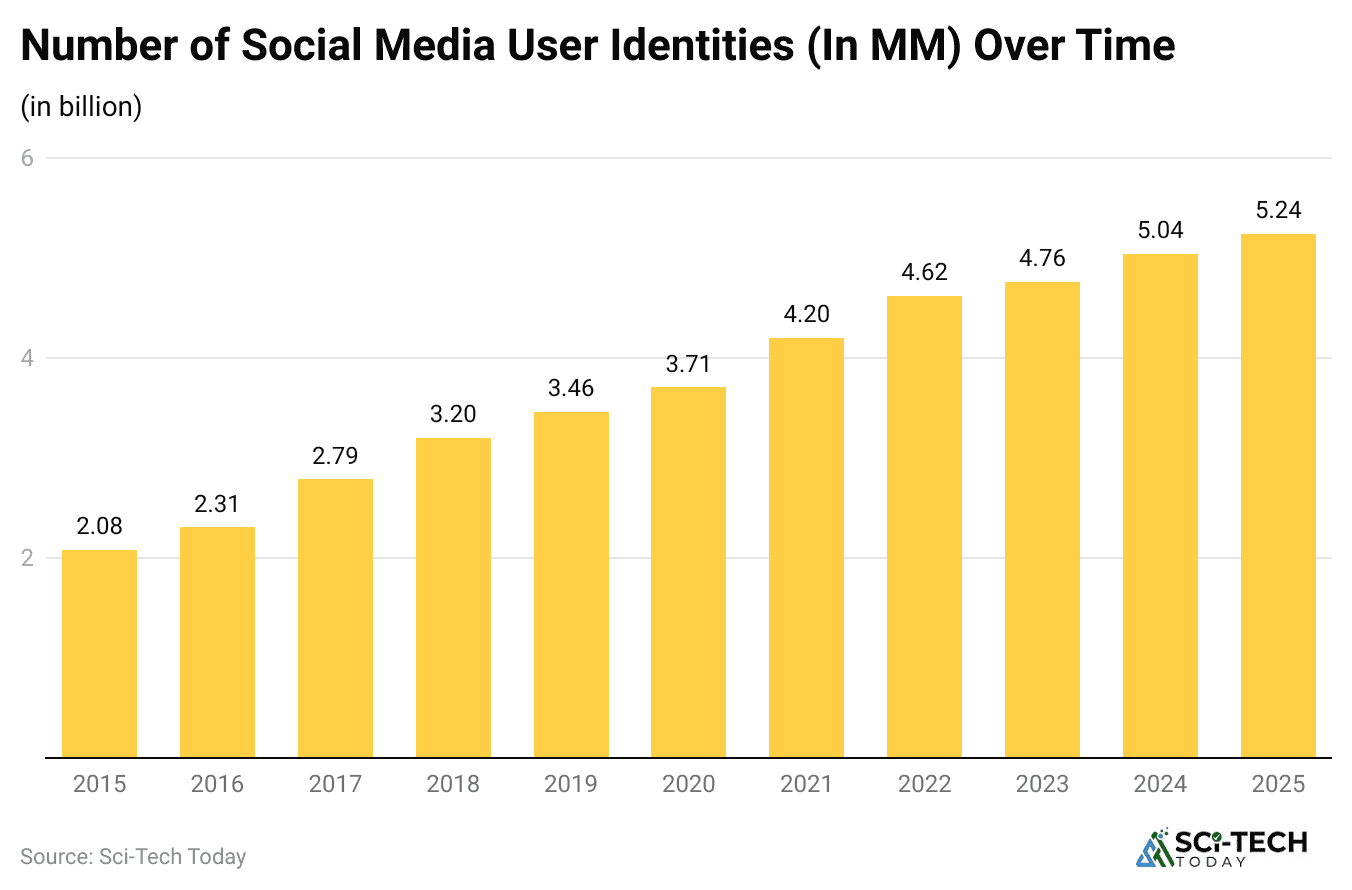
- The 40% of users dedicated to topic research confirms that there is a massive and sustained demand for high-quality, in-depth educational and factual content that a conversational AI can summarize or synthesize.
- Since the dominant age group is 25 to 34 (34.20%), content creators need to focus their efforts on professional, career-focused, and financially-literate topics.
- The overwhelming 79.61% Direct traffic figure indicates that the best SEO for Google Bard is a strong brand and a memorable user experience.
- The fact that YouTube contributes over 52% of social traffic is a clear call to action: any video strategy should actively include how-to guides and tutorials on utilizing Google Bard/Gemini.
- The average session duration of 3.19 minutes proves that the audience is seeking conciseness and efficiency.
- With the US accounting for 37.24% of traffic and India at 9.56%, content creators who focus on these two countries are.
| User Intent | Research/Information Seeking (40%) |
| Core Audience | Age 25 to 34 (34.20%) |
| Traffic Advantage | Direct Traffic (79.61%) |
Conclusion
Overall, if you’ve stuck with me this far, you’ve got a clear picture (I think so): Google Bard’s transition to Gemini marks not just an upgrade, but a declaration of war in the AI space. A platform that moves from zero to 400 million monthly visits in two years, backed by 1.56 trillion words of training data and strategically integrated into the world’s largest search engine.
The future of content creation, research, and business strategy is irrevocably linked to this ecosystem, and the key statistics show an audience that values speed, utility, and direct access over everything else.
The short 3.19-minute sessions aren’t a sign of disinterest; they are the ultimate mark of efficiency. Google Bard has proven it is the tool for people who want the answer now, and that is the benchmark for the future of information. I hope you like this piece of work. Thanks for staying up till the end. If you have any questions, kindly let us know.
Sources
FAQ.
As of mid-2025, Google Gemini is a major player in the AI chat space. The most recent figures indicate the platform has reached approximately 450 million Monthly Active Users (MAU), showing significant and consistent growth throughout 2024 and 2025.
Gemini experienced an acceleration in growth after its initial launch (as Bard in March 2023) and its rebrand/upgrade in early 2024. Monthly active users soared from an estimated 11 million users in late 2023 to 350 to 450 million by mid-2025. This growth is heavily driven by its integration into the Google ecosystem (Search, Gmail, Workspace).
The name change (in February 2024) was a strategic move to unify the brand. Gemini is the name of the underlying, highly capable multimodal AI model (including Nano, Pro, and Ultra versions). By renaming the chatbot to Gemini, Google eliminated confusion and positioned the chat interface as the primary front-end for its most advanced AI technology.
Current data suggests the primary uses fall into a few key areas:
- Research & Information Gathering (Highest Use): Users leverage its actual web access (via Google Search) to find up-to-date information, facts, and summaries of current events.
- Creative Content Generation: A significant portion of users (around 30 to 40%) use it for creative tasks like drafting poems, writing scripts, brainstorming content ideas, and generating social media posts.
- Productivity & Work/School: Tasks like summarizing documents, drafting emails (especially with Workspace integration), and coding support.
User engagement is strong, with the average visit duration hovering around 4 minutes and 37 seconds to 5 minutes per session. This metric indicates that users are moving beyond single queries to engage in multi-turn, conversational tasks.
Integration is Gemini’s major competitive advantage. It is integrated into the core Google Search experience (AI Overviews) and connects directly to Google Workspace apps like Gmail and Docs, allowing users to draft content, summarize emails, and analyze documents directly within the Google suite.
The user base is generally young, tech-savvy, and slightly male-leaning:
- Largest Age Group: Users aged 25 to 34 make up the largest segment (approximately 30 to 35%).
- Gender Split: The audience is approximately 58 to 62% Male and 38 to 42% Female.
Traffic is globally diverse, but the top two countries consistently leading in usage are:
#1. United States
#2. India

Jeeva Shanmugam is passionate about turning raw numbers into real stories. With a knack for breaking down complex stats into simple, engaging insights, he helps readers see the world through the lens of data—without ever feeling overwhelmed. From trends that shape industries to everyday patterns we overlook, Jeeva’s writing bridges the gap between data and people. His mission? To prove that statistics aren’t just about numbers, they’re about understanding life a little better, one data point at a time.
